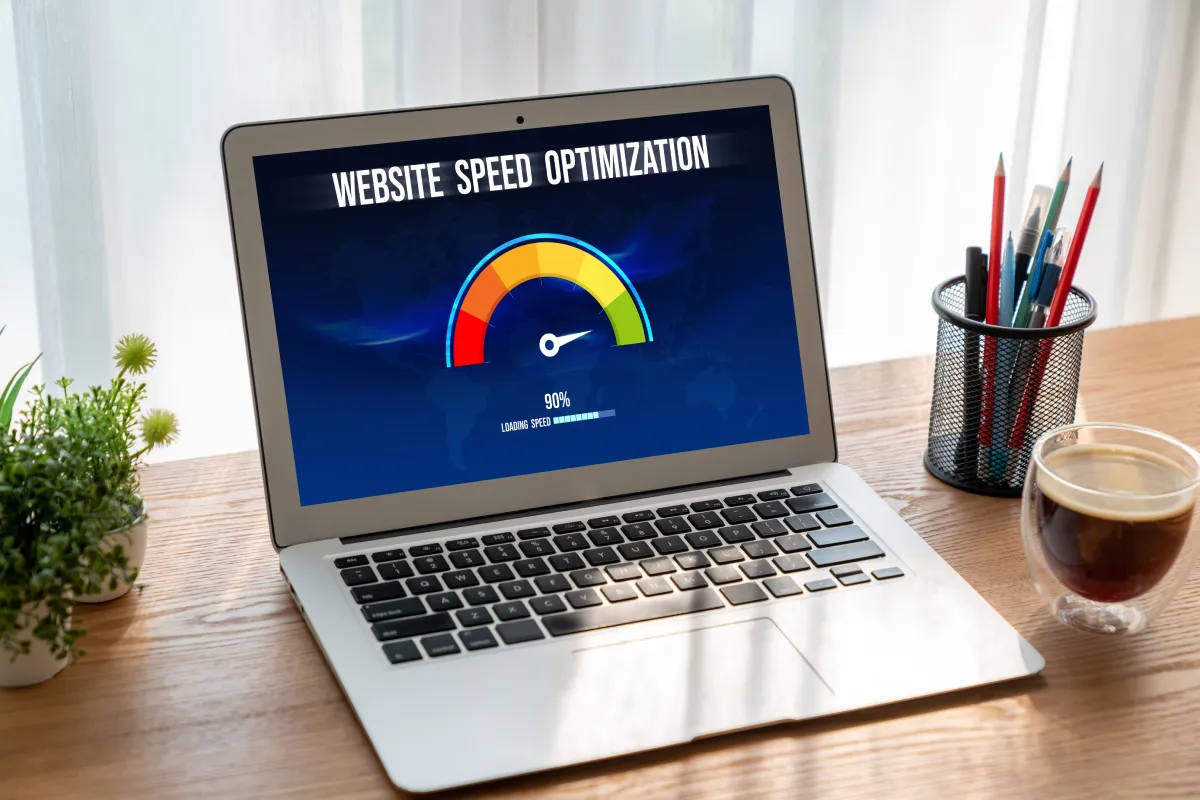Why Website Speed Matters More Than Ever – And How to Optimize It Without Breaking Design
Regardless of the type of business you plan to run, a website can help you reach, engage, and convert a large number of potential customers or clients using various digital platforms.
That being said, your website must be up to the mark for that to happen, and one of the most important ways to do that is by making sure your website is faster than Usain Bolt after his morning coffee. Sorry, that was the fastest scenario I could think of right now.
By now, you’re probably wondering why speed matters and how your website can deliver it.
Well, that’s what I’m about to explore. In this article, I’ll dive into why you should focus on your website’s speed and various simple ways you can do that without any major design breaks.
Why Having a Fast Website Matters
Your website needs to be fast for 4 main reasons. Most notably, these include:
- Better Google Rankings
- Improved User Experience
- Reduced Bounce Rates
- Increased Conversions
Let’s dive a bit deeper into each of them.
Better Google Rankings
Google lists speed as one of the main considerations you need to optimize your website for to rank higher in its search results.
Considering you’ve got the other ranking factors in order, the faster your speed is, the more your chances of appearing on the first page, and who knows, maybe even the first spot on Google’s search results.
Improved User Experience
Put yourself in your customers’ shoes and think, would you stick to a website that is slow and frustrating when there might be other faster options? I doubt it.
Well then, can you really blame your website visitors when they complain of a bad experience? In a time of decreasing attention spans, a fast website could allow you to leave a lasting positive impression on your visitors by keeping them engaged and making navigation smooth.
To keep things fair, I will say that sometimes this is not entirely in your hands, because despite a fully optimized website, the end user may not have a fast internet connection. Fortunately, providers like Xfinity are helping change that with their widespread availability, affordable plans, and, last but not least, the blazing-fast Xfinity internet speeds.
Regardless, you still need to ensure that your website is fast and well-optimized.
Reduced Bounce Rates
Bounce rate is the rate at which website visitors abandon your website due to various factors, including, you guessed it, website speed.
You could have a way better solution or product than your competitors, but if your website is slow, your potential customers may have already left and bought it from a competitor with a faster website. Faster websites can allow these visitors quick access to your content, decreasing the chances of them “bouncing” to your competitors.
Increased Conversions
Conversions could be anything, from your visitors filling out a contact form to ordering a product.
Normally, these conversions should align with the business goals you’re trying to achieve based on the buying stage the visitor is in. If you have a fast website, you have a low bounce rate, and the more visitors interact with your website, the higher their chances of performing actions you can count as conversions.
Now that you’ve got a glimpse of the glory you can enjoy with a fast website, let me help you get there with some simple steps you can take to ensure website speed, without heavily editing its design.
How to Level Up Your Website Speed Without Compromising Design
The steps I’ve shared here don’t require you to go into very detailed or complex technicalities and shouldn’t take very long to implement. Let’s take a look.
Optimize Images
Sometimes the images you upload to your website may be too large, uncompressed, or of the wrong format, all of which can cause them to take more time to load. You want to optimize for this by compressing these images into speed-focused formats, such as WebP.
Reduce Code
It’s also possible that your website’s code has a few unnecessary elements packed into it. Some of these can include CSS rules, JavaScript functions that are never called, HTML, or excess white space, to name a few. You can improve your website’s speed by minimizing these manually or using minification or advanced build tools.
Cache Your Website Elements
Caching is the process of copying and storing website elements, such as images, HTML, CSS, or JavaScript, in a temporary location to load them quickly in case a visitor opens the website again. Talk about creating an illusion.
Use a Content Delivery Network
In case all your solo efforts fail, it’s time to bring in the big gun, a Content Delivery Network (CDN). A CDN is a third-party system that distributes your website’s content across various global servers, which can make website loading faster for those closer to the server. This may be really useful for you if you’ve got a global operation.
Website Speed – A Crucial Player for Success in the Digital Realm
Website speed is and will remain a key determinant of your business’s success in the digital realm. It can help you rank higher in Google searches, deliver great user experiences, and convert your visitors based on your goals.
With the few simple steps shared above, you can optimize your website to deliver the speed that may just exceed customer expectations and differentiate you from your competition.

Leave a Reply